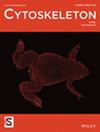Role of actin-binding proteins in cataract formation
Abstract
Introduction
Actin has been implicated in lens opacification; however, the specific actin-related pathways involved in cataracts remain unelucidated. In this study, actin-related proteome changes and signaling pathways involved in the development of cataracts were evaluated.
Methods
The anterior capsule and phacoemulsification (phaco) cassette contents were collected during cataract surgery from 11 patients with diabetic cataract (DC), 12 patients with age-related cataract (ARC), and seven patients with post-vitrectomy cataract (PVC). Untargeted, global identification and quantification of proteins was performed through liquid chromatography-mass spectrometry with the data-independent acquisition (DIA).
Results
In phaco cassette samples, proteins with significantly lower expression in ARC than in DC and PVC were involved in various pathways, including actin binding, actin cytoskeleton reorganization, actin filament capping, cortical actin cytoskeleton organization, and small GTPase-mediated signal transduction pathways. In anterior capsules, proteins with significantly lower expression in ARC than in DC and PVC were involved in actin binding and actin cytoskeleton reorganization pathways.
Conclusion
Actin cytoskeleton and actin-binding proteins are involved in lens fiber elongation and differentiation. Rho GTPases contribute to actin cytoskeletal reorganization, and their inactivation is linked to abnormal lens fiber migration. These findings link actin binding to lens fiber integrity, lens opacification, and cataracts.


 求助内容:
求助内容: 应助结果提醒方式:
应助结果提醒方式:


